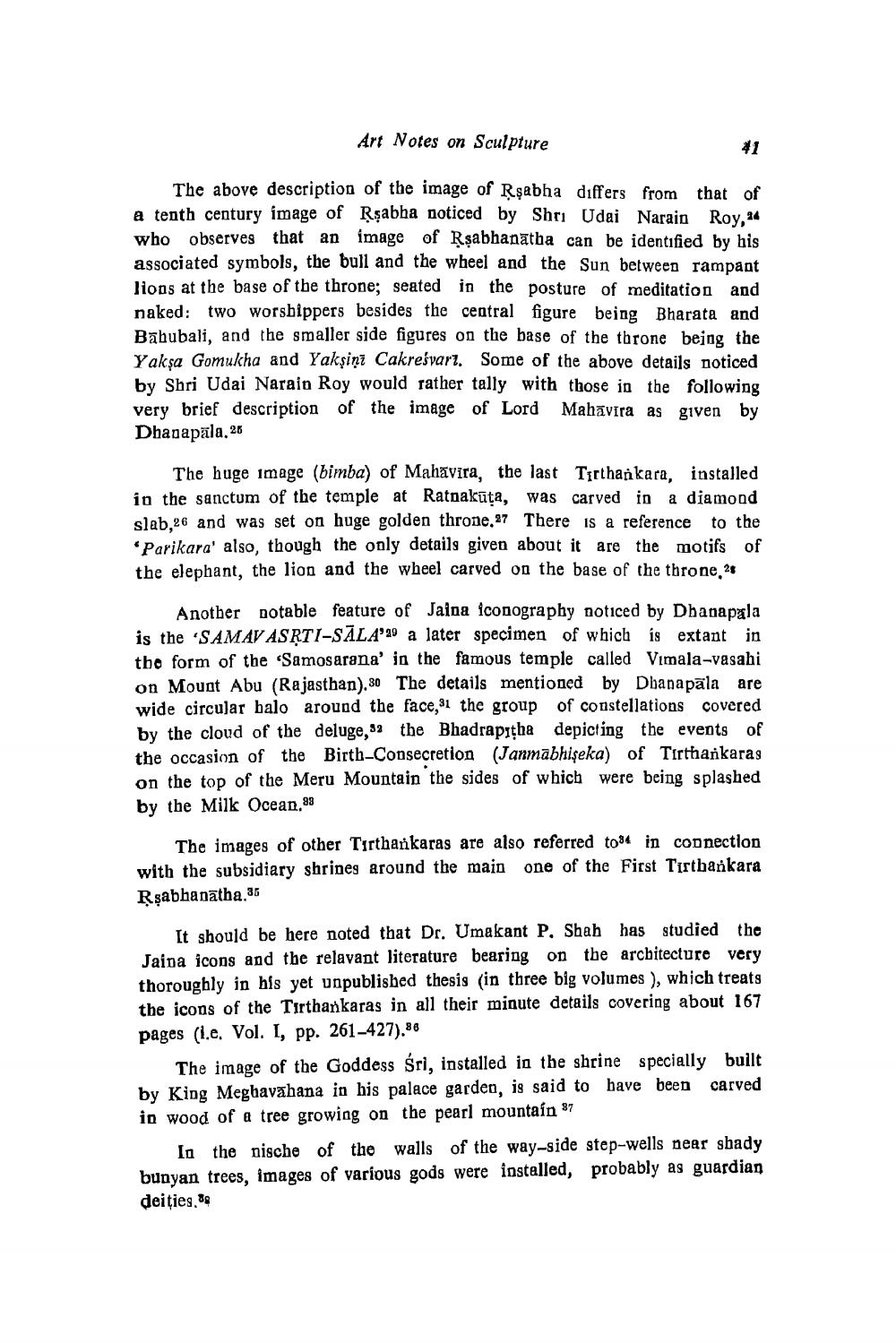________________
Art Notes on Sculpture
Roux
se of the throne and the wheel anatha can he Narain
The above description of the image of Rşabha differs from that of a tenth century image of Rşabha noticed by Shri Udai Narain Roy, 24 who observes that an image of Rşabhanatha can be identified by his associated symbols, the bull and the wheel and the Sun between rampant Jions at the base of the throne; seated in the posture of meditation and naked: two worshippers besides the central figure being Bharata and Babubali, and the smaller side figures on the base of the throne being the Yaksa Gomukha and Yakşiņi Cakreśvarz. Some of the above details noticed by Shri Udai Narain Roy would rather tally with those in the following very brief description of the image of Lord Mahavira as given by Dhanapāla.26
The huge image (bimba) of Mahavira, the last Tirthankara, installed in the sanctum of the temple at Ratnakūta, was carved in a diamond slab,26 and was set on huge golden throne,27 There is a reference to the • Parikara' also, though the only details given about it are the motifs of the elephant, the lion and the wheel carved on the base of the throne, 28
Another notable feature of Jaina iconography noticed by Dhanapala is the SAMAV ASRTI-SALA'29 a later specimen of which is extant in tbo form of the Samosarana' in the famous temple called Vimala-vasahi on Mount Abu (Rajasthan).30 The details mentioned by Dhanapala are wide circular balo around the face, ai the group of constellations covered by the cloud of the deluge, sa the Bhadrapitha depicting the events of the occasion of the Birth-Consecretion (Janmabhiseka) of Tirtharkaras on the top of the Meru Mountain the sides of which were being splashed by the Milk Ocean.83
The images of other Tirthankaras are also referred to84 in connection with the subsidiary shrines around the main one of the First Tirtbankara Rşabhanatha.35
It should be here noted that Dr. Umakant P. Shah has studied the Jaina icons and the relavant literature bearing on the architecture very thoroughly in his yet unpublished thesis in three big volumes ), which treats the icons of the Tirthankaras in all their minute details covering about 167 pages (1.e. Vol. I, pp. 261-427).86
The image of the Goddess sri, installed in the shrine specially built by King Meghavahana in his palace garden, is said to have been carved in wood of a tree growing on the pearl mountain 37
In the nische of the walls of the way-side step-wells near shady bunyan trees, images of various gods were installed, probably as guardian deities. 88




